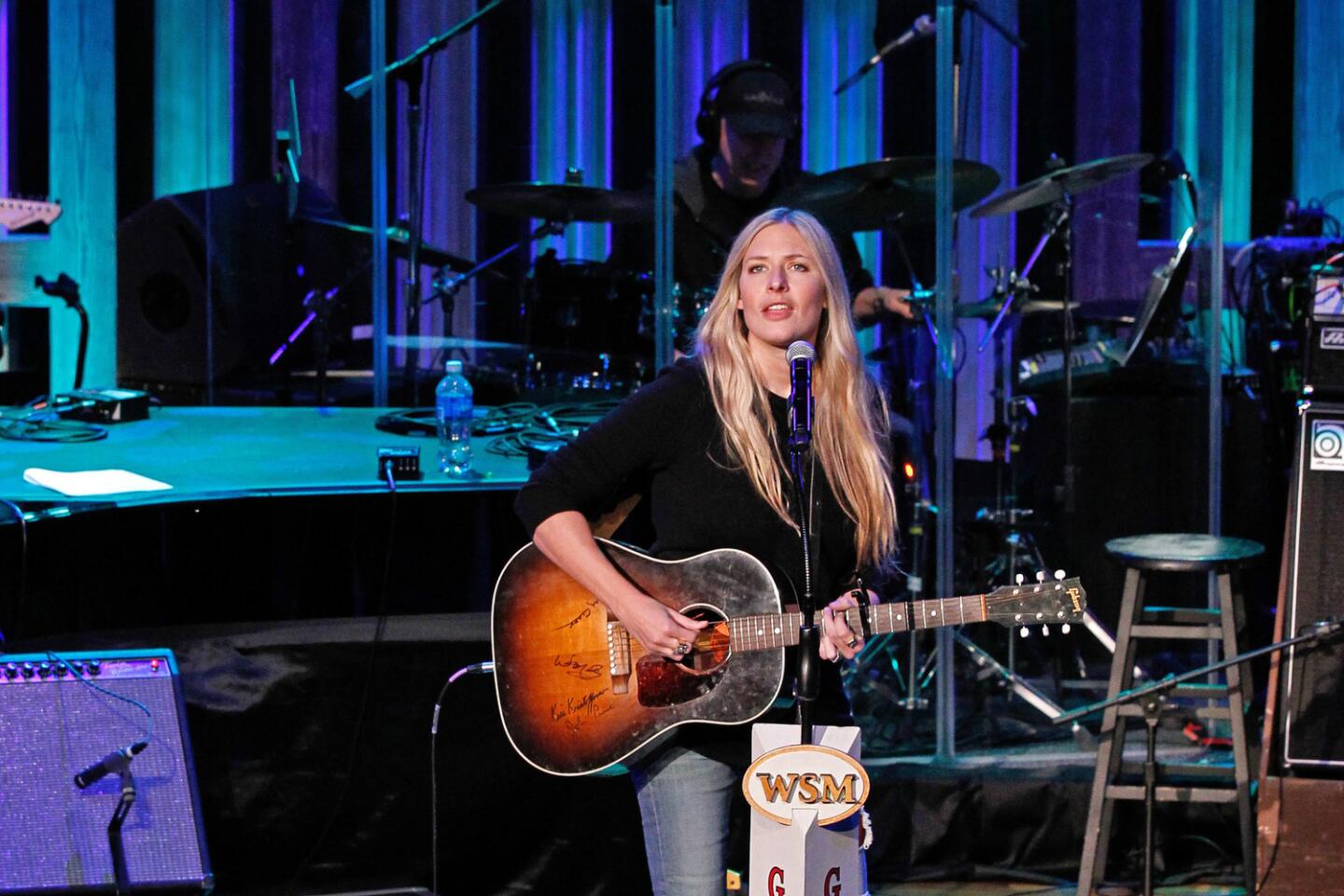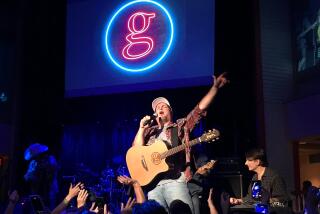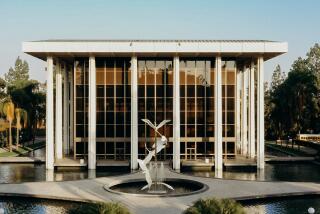At the Grand Ole Opry House in Nashville, tradition beckons
This city is blanketed with churches. Downtown Presbyterian, Cross Point, First Baptist, Midtown Fellowship. But many of those who come here seek a different kind of spiritual kinship that can be found only at local shrines devoted to music: Ryman Auditorium and the Grand Ole Opry House, the Country Music Hall of Fame and Museum, and the Historic RCA Studio B.
If these places were ranked in order of importance, purists might point to the Ryman, which was built in 1892 and housed the Grand Ole Opry from 1943 until 1974.
But it was the relatively new Opry House that beckoned on a hot August night.
I came to this city in north-central Tennessee for a conference and figured I’d better take advantage of some of the local offerings during my four days here.
Although my personal playlist doesn’t include much country music, I thought it would be disrespectful to visit and not experience the Opry, a live radio show and musical extravaganza that started nine decades ago as the “WSM Barn Dance” and has featured entertainers as diverse as the Fruit Jar Drinkers and Bill Monroe and his Blue Grass Boys, Boxcar Willie and Carrie Underwood.
I bought tickets for the show only, although you can buy package deals that include backstage tours and dinner.
The Grand Ole Opry House, which opened in 1974, is about a 20-minute drive from downtown Nashville. It’s just down the road from the Gaylord Opryland Resort & Convention Center, a sprawling complex that includes several restaurants and bars, a spa, the General Jackson Showboat and more than 2,700 hotel rooms. It’s across the street from the Opry Mills shopping mall, where, before a show, you can catch a movie in Imax or check out hunting gear at Bass Pro.
“Subtlety” is not a word that comes to mind as you make your way to the performance hall. (Shows are staged at the Opry House from February through October; they move to the Ryman November through January.)
The theater, which seats 4,400, is reminiscent of a megachurch. Visitors sit side by side in pews. Standing at the back of the auditorium, looking at how the spotlights bring out the jewel-like colors of the stage backdrop, you may find yourself thinking of a stained-glass window. And on this night, more than one performer invoked a higher power.
The show was divided into four 30-minute segments, each with a performer/host and a series of musical acts, including an 85-year-old mandolin player as well as Holly Williams, a granddaughter of country music legend Hank Williams.
There were solo performers and big bands with backup singers and dancers, as well as pop tunes, country ballads and music that sounded as though it was first played in early 20th century North Carolina. The evening felt like a throwback to another era, which, in a way, it was.
“One hundred years ago, country music as we know it today didn’t exist,” Colin Escott wrote in the 2006 book “The Grand Ole Opry: The Making of an American Icon.”
“Depending on where you were, you’d hear Gaelic fiddle tunes, old English ballads, new American ballads, bawdy cowboy songs, hymns or minstrel songs. Undocumented and ignored, it was called folk music because it was the music that the people of America sang and played for themselves.”
Eventually “all the pieces of American folk music came together to make country music.”
That’s what our show was all about — the pieces of country music. That and the show’s “proud sponsors.”
The Opry started as a radio show in 1925 and continues to be broadcast on WSM-AM (650) and on www.opry.com, www.wsmonline.com, SiriusXM satellite radio and on an Opry mobile app (for iOS and Android). At various points, four announcers stood on the side of the large stage and took turns reading their lines in praise of Dollar General or Cracker Barrel Old Country Store or the Humana healthcare company. All in the spirit of old-time radio? Mostly. Grandiloquent? Absolutely.
The first performing host of the evening, 68-year-old John Conlee, took the stage to sing “Common Man” and, later, “Backside of Thirty,” and the audience members sang along. They were enthusiastic but respectful (for the most part), dressed in ensembles as varied as Sunday-go-to-meeting and six-pack-by-a-pool.
Conlee’s sole guest for the first segment was Caitlin Rose, a 27-year-old whom Spin magazine praised as “something of a foil for Taylor Swift.” Her dress and manner were modest yet assured. The crowd loved her, but the crowd seemed to love every performer. They were here to be entertained, and almost everyone was engaged, except for the woman behind me who indulged in a lengthy cellphone conversation bemoaning an acquaintance who remained “a staunch Democrat.”
Among the other performers on the bill was Holly Williams (besides being a granddaughter of Hank, she’s a daughter of Hank Jr.), who has been compared to singer-songwriters John Prine and Bruce Springsteen. She sang a lovely song titled “Waiting on June” about her maternal grandparents.
The show also featured the Willis Clan, a family of 12 siblings with shiny hair and big smiles who competed in 2014 on “America’s Got Talent,” and Jesse McReynolds, the octogenarian mandolin master, who according to Peter Cooper, formerly of the Nashville Tennessean, “has long been known for tweaking the boundaries of bluegrass.”
When the show concluded, the audience sauntered out of the auditorium just ahead of a serious downpour, many of them clutching bags from the Opry gift store or remnants from the Opry concession stands.
An out-of-towner might be tempted to conclude that an evening at the Opry is just another excursion into a land that does not feel it necessary to detox from the branding of America. But amid the commercials and the chicken tenders and the refrigerator magnets, there were moments that brought Escott’s words to mind.
“Country music venerates tradition,” he wrote. It’s hard to imagine that anyone could have left the auditorium without feeling a little richer.
If you go
THE BEST WAY TO NASHVILLE
From LAX, nonstop service to Nashville is offered on American, Delta and Southwest; direct service (stop, no change of plane) is offered on Southwest; connecting service (change of planes) is offered on United, American, Delta, US Airways and Southwest. Restricted round-trip fares begin at $425, including all taxes and fees.
Grand Ole Opry, 2804 Opryland Drive, www.opry.com. Tickets from $32. Daytime backstage tours often available daily February through October. Some post-show tours also available.
More to Read
Sign up for The Wild
We’ll help you find the best places to hike, bike and run, as well as the perfect silent spots for meditation and yoga.
You may occasionally receive promotional content from the Los Angeles Times.












